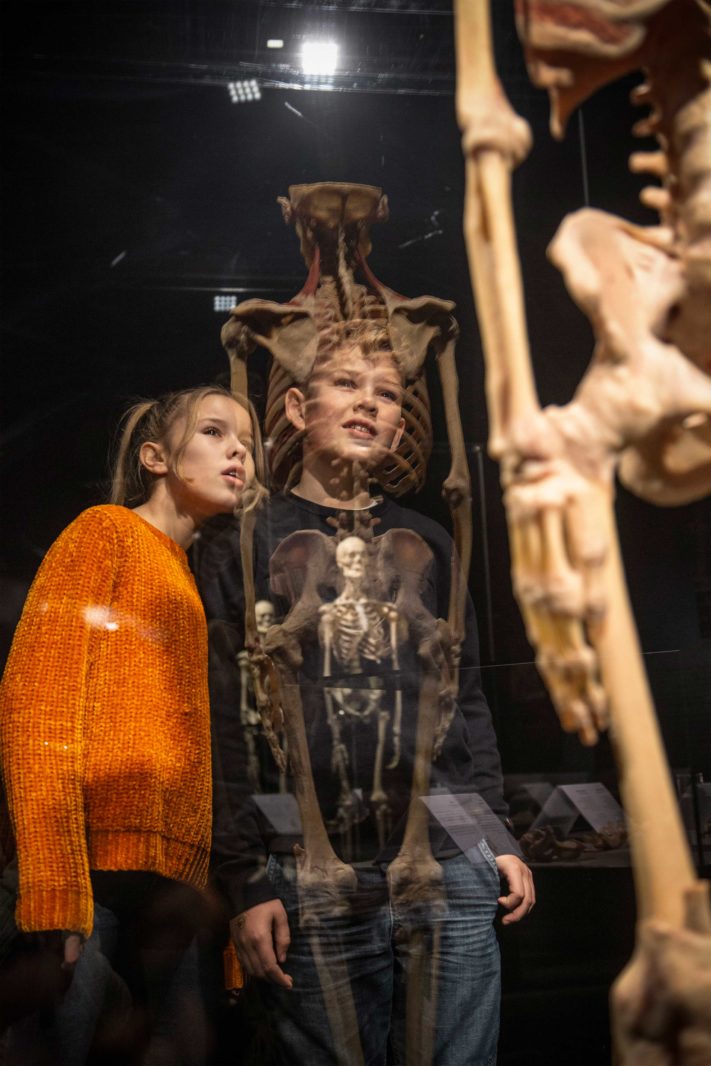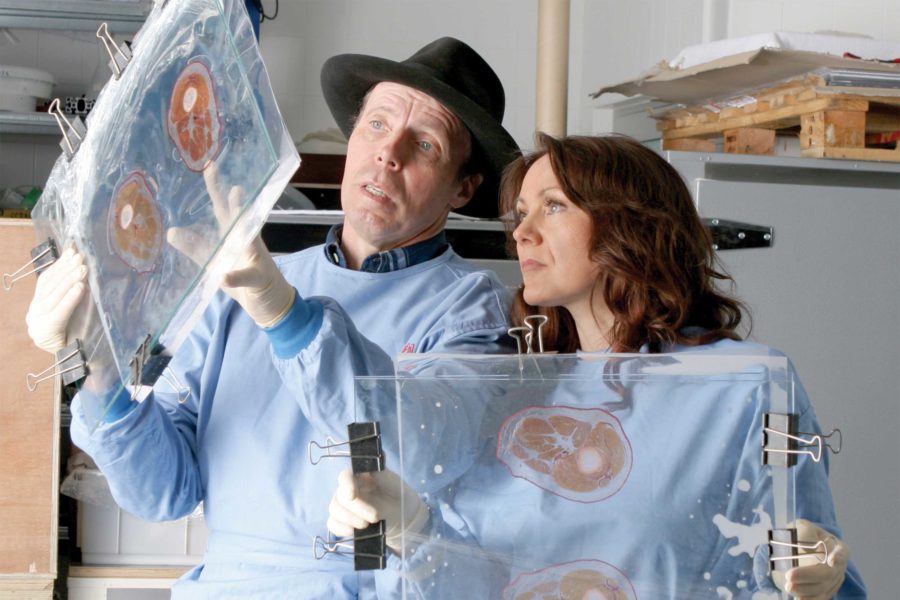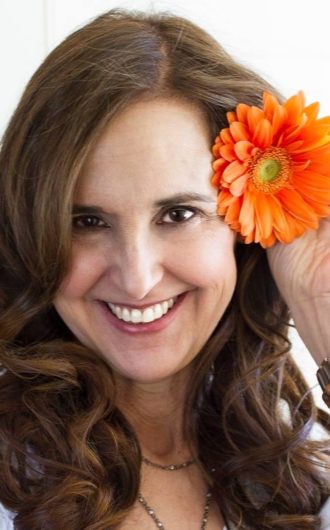After medical school Dr. Angelina Whalley had planned to become a physician. She had no idea that the bodies she would end up spending her life examining would be, well, dead.
Whalley is the Creative and Conceptual Designer of the popular Body Worlds exhibitions, which she helped build with her husband and project founder Dr. Gunther von Hagens. At Boston’s Museum of Science “Body Worlds & The Cycle of Life” is on exhibit now through the end of the year.
“When I graduated with my medical degree, I desperately wanted to become a surgeon,” says Whalley. “I thought it was a good idea in this man-dominated world to have a little extra qualification, so I thought going into anatomy for a year would help me.”
Well, that year turned into a lifetime when Whalley met von Hagens and fell for both him and his project. In a Body Worlds exhibit you see human specimens that have been preserved through plastination, a technique von Hagens developed in the 1970s that replaces bodily fluids with certain plastics to prevent decay.
The preservation technique allows us the unique experience of being able to see the inner workings of our own bodies. It also shows what happens when we don’t treat our bodies right. For example, at the Museum of Science exhibit, you can see the lungs of a smoker and the lungs of a non-smoker; this and other such pairings illustrating how neglect can impact our bodies.
“Having this knowledge is empowering, because people have a different view of themselves,” says Whalley. “They frequently leave the exhibition thinking, ‘I’ll never take my body for granted again.’” According to surveys the group distributes after the show, visitors have made positive life improvements after seeing the negative impacts first-hand.

Courtesy of the Museum of Science
Visitors take in the popular Body Worlds exhibition.
While the exhibit dives deep beneath the skin, it is not meant to scare visitors, just to educate them. The culture of death in the U.S. is often one of silence. Body Worlds, which is composed entirely of bodies specifically donated to this project, causes visitors to confront, and value, their own mortality.
“The exhibition is hovering in an area between life and death. That borderline situation has always caused fascination among people, but at the same time we tend to feel uncomfortable,” explains Whalley. “We all have this horrible view of anatomy that it’s dark and mysterious. That’s just not the case.”
When Whalley first joined the team she was often in the lab performing the plastination. Now, Body Worlds has grown so popular and with multiple shows running around the world at once, she spends most of her time in curator mode. Whalley picks the specimens that will go on display and how they’ll be posed, creates overarching themes for each show and, as a licensed physician, writes all the medical texts that accompany the specimens.
She says working in this field has helped her grow in unexpected ways. “As a small, family company, I was pushed into certain tasks and that helped me make my way. I think if I had worked in a classic hospital environment I might not have become a leader.”
Whalley hopes visitors learn to cherish their physical selves while viewing Body Worlds. She says, “How you feed it, how you exercise, whether you feel accepted or ignored, everything has an effect on your body. The fate of your body over its lifecycle is in your hands.”



 2 min read
2 min read


